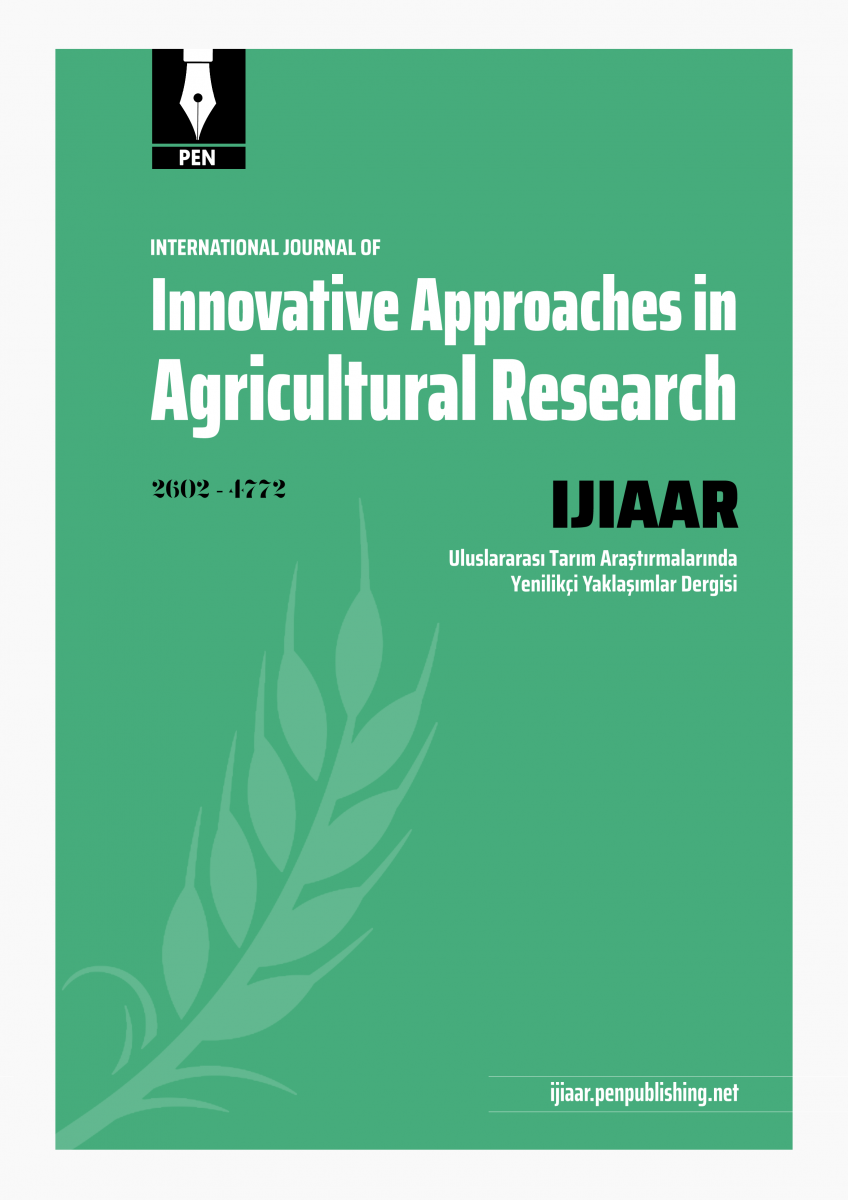Original article | Open Access
International Journal of Innovative Approaches in Agricultural Research 2023, Vol. 7(4) 442-454
The Investigation of Some Morphological Characteristics of Forage Kochia Genotypes Determined Emergence Ratio
pp. 442 - 454 | DOI: https://doi.org/10.29329/ijiaar.2023.630.6
Published online: December 31, 2023 | Number of Views: 7 | Number of Download: 74
Abstract
Forage kochia is a semi-shrub forage plant tolerant to drought, cold and soil salinity. In addition to being a quality feed source for livestock, with its ability to remain green in the dry feed period when other fodder plants dry up, it also offers the opportunity to fight wildfire during this season. Despite these advantages of forage kochia, the fact that it loses its seed viability in a brief time causes the restriction of the cultivation of this plant. For this reason, the seeds of three different forage kochia genotypes (C1, C2, M5) harvested in November 2018 and stored under room conditions were periodically sown at five different periods; the day after harvest, 4th months, 7th months, 10th months, and 13th months after harvest in greenhouse conditions. The study's first objective was to determine the genotype with the most prolonged viable period of seed viability. At this study stage, the M5 genotype, sown 10th months after harvest, was recorded as the highest value with a 35.7% emergence ratio. The survey also obtained C1 and M5 genotypes that retained seed viability one year after harvest. In the second phase of the study, plants showing emergence were planted in the field conditions in November 2020, and plant height, canopy diameter, stem diameter, leaf length, leaf width, leaf color, and hairiness of the plants were examined throughout 2021 and 2022. When the averages of the two-year data were analyzed, it was determined that genotype C1 had the highest plant height with 105 cm when sown 13th months after harvest. Although the genotype M5, which was also sown in this period, had the shortest plant height with a plant height of 42.5 cm, it can be stated that this genotype also had the darkest leaf color (Scoring 7.25; 1: Red-Grey, 3: Grayish Green, 5: Bluish Green, 7: Green, 9: Dark Green). As a result of the study, it can be stated that C1 and M5 genotypes, which were sown 13th months after harvest, stand out from the other genotypes in terms of their long seed viability period and morphological characteristics for use as a gene resource in forage kochia breeding.
Keywords: Forage kochia, Emergence, Gen resource, Seed viability, Yield components
| How to Cite this Article |
|---|
|
APA 6th edition Harvard Chicago 16th edition |
| References |
|---|
|

